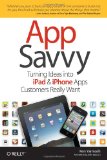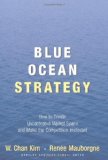The 11/3/10 Washington iPhone/Android/Smartphone Developers meetup featured an interview with Ken Yarmosh, author of App Savvy. Organizer Pete Erickson did a great interview with him. (This was the same meeting where we showed a demo of iSpeedShop.)
Ken’s book mainly focuses on iOS devices (iPhone, iPod Touch, and iPad), but the principles can be applied to software development on any platform, from Android to Mac OS to Windows. Here are some of the take-away points:
1. Get user feedback during app development; don’t wait until after
It’s a mistake to come up with an idea, develop the app, then put it in the App Store and hope to get users and income. Rather, developers should do market testing and customer development – share their ideas and designs with potential customers – before, during, and after software development. While there’s some risk that other developers could steal the idea,
- developers can minimize that risk by not sharing the entire app publicly,
- executing the idea is much harder than having it, and
- there’s a much greater risk that a developer will spend months developing an app in secrecy, then discover no one wants to use it.
For example, developers should get feedback on their graphics and user interface designs. How do you get people to do this, especially people outside your circle of friends? The web site Dribbble.com already draws visitors that like to look at, and give feedback on, designs. So a developer can post her graphics there and see how many people view it. The developer can also link to a landing page on her web site so potential users can sign up for news and to be beta testers. This lets developers supplement their natural beta testers, friends and family, with a more diverse set of people.
Developers need beta testers to follow one of Ken’s rules: never get your first feedback from App Store comments! Instead, get potential users involved early in the development process. While you may have twenty features in mind for your app, users probably only want one or two things. So having beta testers lets you figure out what those things are and cut out unwanted features. This should streamline both your user interface and your development cycle.
2. Find an unserved niche
 Rather than trying to compete with the many other lighter applications out there, Smule created a niche by making their Sonic Lighter app social. When you blow into your iPhone, you light another user’s lighter somewhere around the world. A map shows you other people using the lighter app at the same time. Developers should follow such a “blue ocean” strategy to find their niche, rather than being a me-too competitor.
Rather than trying to compete with the many other lighter applications out there, Smule created a niche by making their Sonic Lighter app social. When you blow into your iPhone, you light another user’s lighter somewhere around the world. A map shows you other people using the lighter app at the same time. Developers should follow such a “blue ocean” strategy to find their niche, rather than being a me-too competitor.
Developers can get inspiration for their niche not just from direct competitors, but from other product lines and real-world analogues. For example, Ken showed an alarm clock app he’s working on. There are certainly plenty of alarm clock apps out there, but Ken is making his unique by taking inspiration from real-world clocks. He looked at pictures of several clocks in planning his user interface.
3. Plan your publicity before your app hits the App Store
When your app launches, you have a short time to get the attention of users and the media. So cultivate potential users and media contacts before you launch, then notify them when your app is available in the App Store.
As far as social media, Ken recommends focusing on twitter more than facebook because twitter users are more on the edge, so they’re the kind of people you want as either beta testers or media contacts. In twitter, periodically search for keywords related to your app, so you know what people are tweeting about competing apps or unmet needs. Twitter clients such as Tweetdeck work well: you can create a column for each search.
More to come
With all the great tips provide by Ken in his interview, we bought a copy of App Savvy and will blog about it as we read it.


